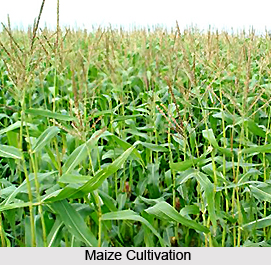 Economy of East Garo Hills District is basically agrarian and rural based. Agriculture is the mainstay of about 90 percent of the population of this district of Meghalaya and most earn their livings directly or indirectly from agriculture. Traditionally, agriculture in the district mostly includes cultivation of food crops and it is only in the recent years that cash crop agriculture has gained popularity. It is estimated that there is a great potential for agro-based industries in East Garo Hills District. Rice is the most important food crop of the district that is grown abundantly, both in the plains as well as in the hills. Other food crops that are widely grown in the district are tapioca or manoic, yam, maize and millets. Wheat is also grown but because of the low demand, much of the yield goes to markets outside the districts.
Economy of East Garo Hills District is basically agrarian and rural based. Agriculture is the mainstay of about 90 percent of the population of this district of Meghalaya and most earn their livings directly or indirectly from agriculture. Traditionally, agriculture in the district mostly includes cultivation of food crops and it is only in the recent years that cash crop agriculture has gained popularity. It is estimated that there is a great potential for agro-based industries in East Garo Hills District. Rice is the most important food crop of the district that is grown abundantly, both in the plains as well as in the hills. Other food crops that are widely grown in the district are tapioca or manoic, yam, maize and millets. Wheat is also grown but because of the low demand, much of the yield goes to markets outside the districts.
East Garo Hills District produces substantial quantities of fruits like oranges, pineapples, bananas and jackfruit and spices like chillies, ginger, turmeric and bay leaves. In recent years there has been an increase in the coverage of plantation crops like rubber, coffee, tea and cashew nuts. The increased demand for jute, mustard, ginger, cotton, rubber and other cash crops has also encouraged farmers to increase the area of cultivation for these crops. Improved road communication and marketing facilities as well as improved methods of cultivation and crop protection have also contributed to the increase in the production of food and cash crops. Irrigation has so far played only a minimal role in agriculture in the Garo Hills. The latest horticultural introduction in the district is vanilla vines. There is also scope for floriculture or flower farming to flourish, due to favourable climate enabling low cost cultivation. East Garo Hills District is ideal for growing orchids and tropical blooms like anthurium and bird of paradise (Strelitzia Reginae).
Although the economy of East Garo Hills District is largely agrarian, agriculture and agro-based industries has not been fully exploited in the district. There is tremendous potential for investment and development in food processing and ample scope for setting up a viable large scale fruit processing units in the district. Besides agriculture, a small part of the economy of East Garo Hills District is occupied in small-scale industries such as sericulture and weaving, animal husbandry and dairy farming, carpentry and bamboo-working, brick-making, etc. Mining is another important industry. The district has fairly large reserves of coal, limestone and clay.



















